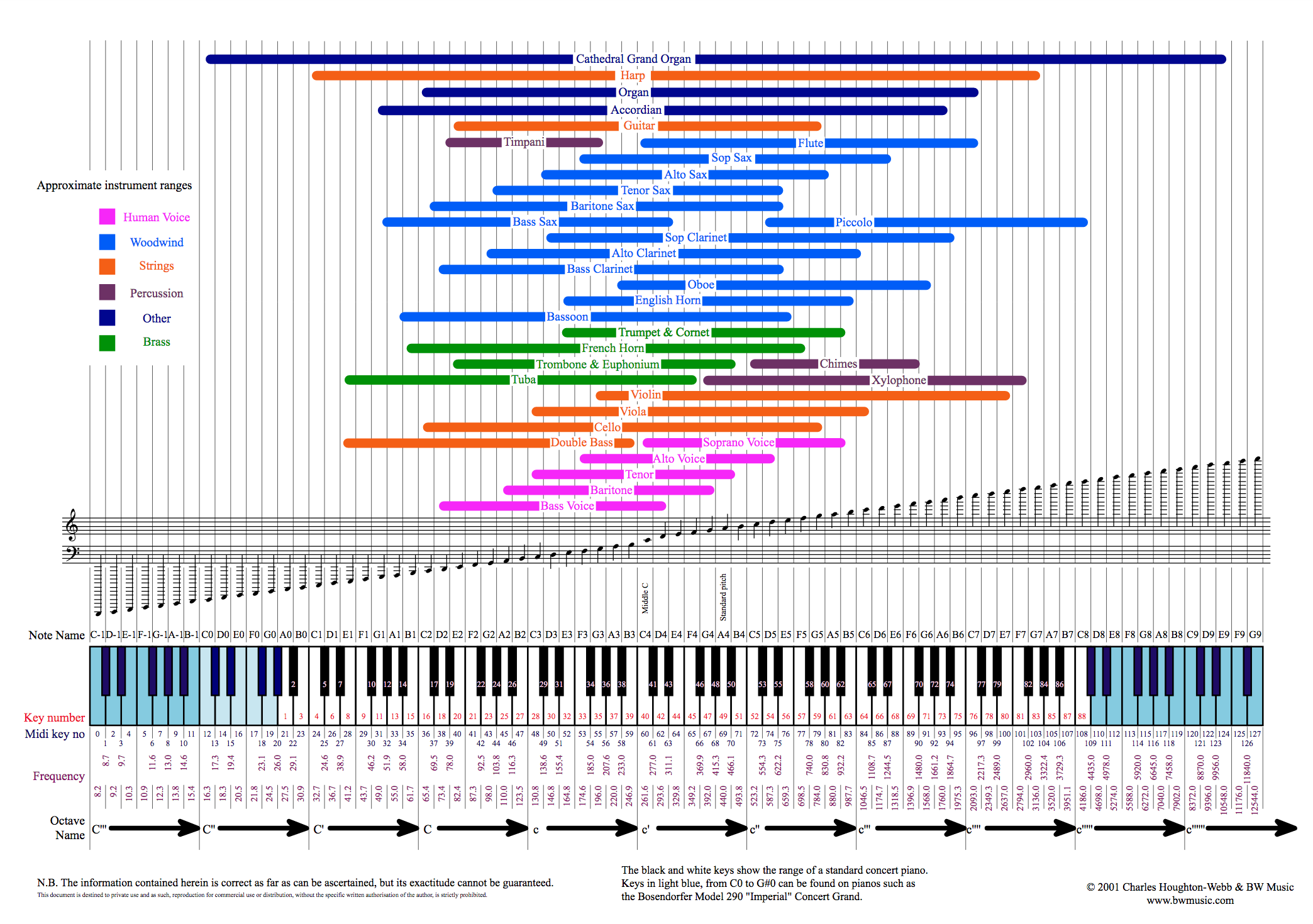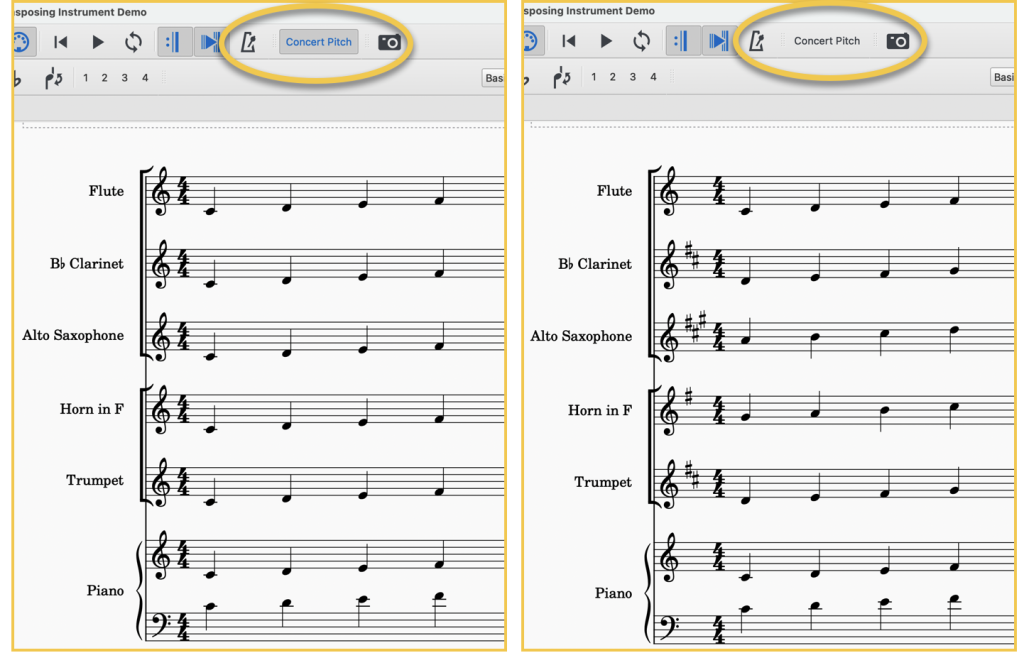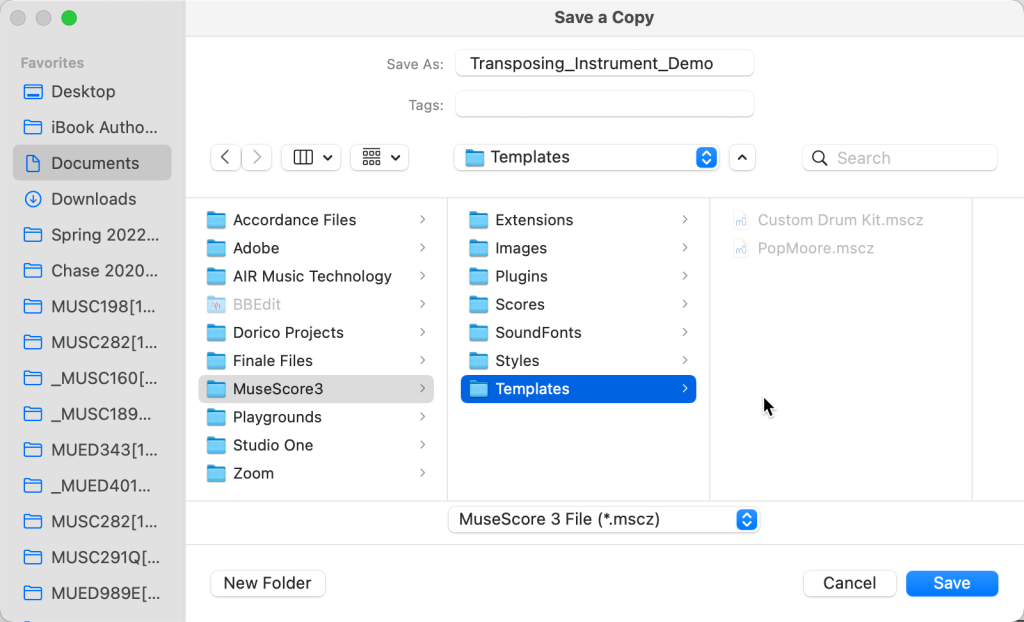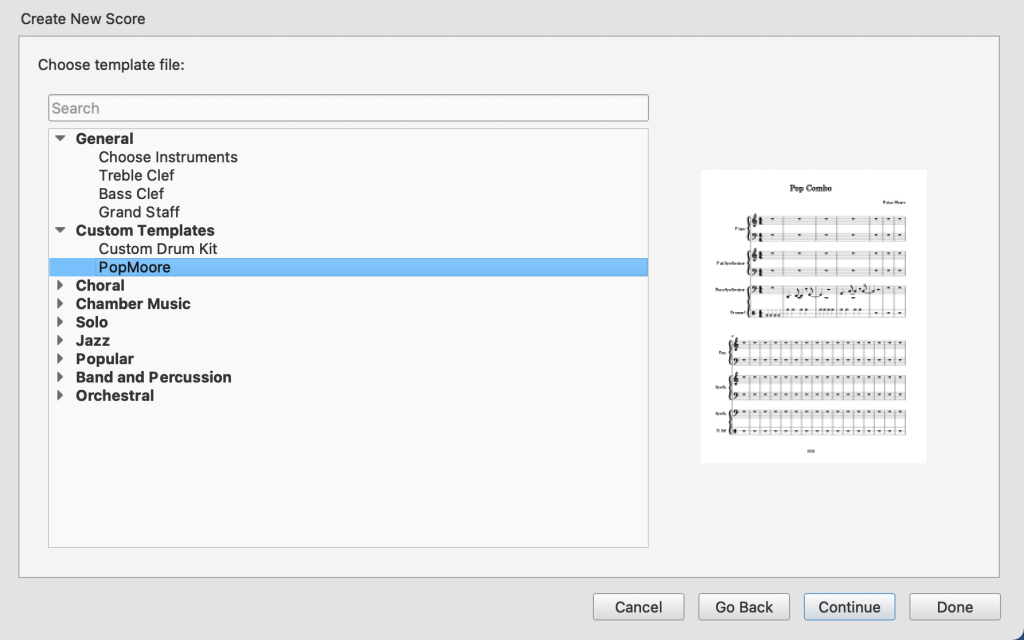Project 8 Table of Contents
Project 8: Overview – Scores (Templates)
In this chapter will delve a bit more into several families of acoustic instruments that have unique attributes when notating music to be played. This will include (1) percussion writing (and editing), (2) transposing instruments, and (3) creating unique scores via the template feature of MuseScore.
Summary: Create a MuseScore document that could be saved as a “Custom Score Template” .
Features of this project
- Minimum 1 “unpitched” percussion part with an edited DrumSet that contains ONLY 7 drums, each mapped to the 7 pitch names A thru G.
- Minimum 1 bass instrument
- Minimum 1 Grand Staff instrument part suitable for harmony and/texture
- Two “melody” instruments: one that does NOT transpose, and one that does..
NOTE: these 5 parts represent the minimum – feel free to add other parts as desired
How To… Project 8
Editing Percussion
Unpitched percussion instruments in MuseScore can be easily edited around three characteristics: (1) name of the drum sound, (2) how the instrument is notated on the staff, and (3) the QWERTY shortcut used to input the note. The playback instruments in MuseScore adopt the General MIDI drum sounds.
Here’s a video that demonstrates editing any DrumKit…
Transposing Instruments
Every acoustic instrument has a lowest and highest possible note. Think of a bass guitar vs. a flute vs piano. Here’s a chart that places the ranges against a the 128 MIDI note numbers, many of which are lower and or higher that acoustic instruments.

For some instruments, the note the player sees on the page will be different than what is actually heard. It might not seem intuitive at first, but there are two good reasons for this. (1) Keep the notation ‘on the staff’ – for an acoustic bass for example, if you notated what is actually heard, all of the notes would be well below that staff and require the use of extra lines (referred to as ‘ledger lines’). (2) For families of instruments such as saxophone, it makes it easier for the musician to switch. (It is much easier if playing an alto sax and playing a baritone sax use the same fingerings, technique, etc.
For music notation, you need to know whether you are viewing ‘concert’ pitch or ‘written’ pitch.

The left image shows these instruments displaying “Concert Pitch” – what you would actually hear. The right side displays the “written pitch” – what the musicians would see on their music. MuseScore lets you easily toggle views by using the Concert Pitch button at the top.
Scores & Templates
If you use the Wizard when first creating a new MuseScore document, you can return to the instrument(s) in your song by using the “Edit” menu and selecting “Instruments” (you can also use the Shortcut “I”).

You can reorder the instruments (select one and use the up/down arrows on the right side) as well as add staffs, add instruments, or remove instruments.
Make a Score a Template
- Create a Template: Using the “Save As…” menu, save your score in the Templates folder (Documents → MuseScore → Templates)
- Use a Template: From the Start Center (new document)


Project 8: Practice Sessions
Practice Sessions
I’m providing a video where I run through the assignment for this Project. To save time, I’ve doubled the speed of the video but feel free to pause if needed!

